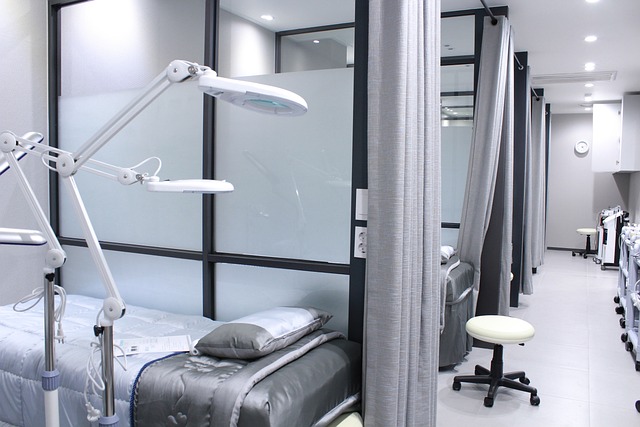Rehab Jobs and Roles in Patient Rehabilitation
Rehabilitation jobs describe the range of professional roles that support a patient’s recovery, functional improvement, and long-term care after injury, illness, or surgery. These positions exist in hospitals, clinics, nursing facilities, and community programs and emphasize teamwork between medical staff, therapists, and caregivers to plan treatment, manage equipment needs, and track recovery goals while respecting patient-centered care and clinical guidelines.

Rehabilitation roles in healthcare
Teams in rehabilitation include licensed clinicians and support staff who contribute complementary skills. Common roles are physical therapists, occupational therapists, speech-language pathologists, rehabilitation nurses, and therapy assistants. Each role involves assessment, goal-setting, documentation, and collaboration with medicine and nursing colleagues. Work focuses on clinical interventions, patient education, and coordination with multidisciplinary teams in hospital and outpatient clinic environments to ensure continuity of care for patients with diverse medical and functional needs.
How patient care and therapy are coordinated
Patient-centered coordination involves clinical assessment, individualized treatment planning, and progress measurement. Therapists evaluate mobility, cognition, swallowing, and activities of daily living to design interventions such as exercise programs or adaptive strategies. Communication among physicians, nursing staff, case managers, and family caregivers helps integrate treatment with overall medical management. Documentation and handoffs are important for transitions between inpatient and outpatient services, and for ensuring safe use of equipment, appropriate therapy intensity, and alignment with a patient’s recovery goals.
Settings: hospital, clinic, and community care
Rehabilitation work occurs in inpatient hospital units for acute recovery, outpatient clinics for ongoing therapy, skilled nursing facilities for post-acute care, and community-based programs for long-term support. Hospital settings often require close collaboration with medical teams and adherence to acute care protocols; clinics emphasize scheduled sessions and functional progress; community programs address accessibility, home assessments, and coordination with local services. Familiarity with healthcare regulations, infection control, and documentation systems is common across these environments.
Exercise, equipment, and mobility aids
Therapeutic exercise and assistive equipment are central to many rehab roles. Clinicians prescribe strength, balance, and flexibility exercises tailored to a patient’s medical condition and recovery stage. Equipment such as wheelchairs, walkers, splints, orthotics, and adaptive utensils supports independence and safety. Proper assessment, fitting, and training for transfers and mobility are critical. Providers often liaise with durable medical equipment vendors and educate patients and caregivers on safe operation, maintenance, and integration of devices into daily routines.
Physical, occupational, and speech therapy pathways
Physical therapy, occupational therapy, and speech-language pathology each address specific functional domains. Physical therapy focuses on gait, strength, pain management, and mobility training. Occupational therapy targets self-care, fine motor skills, and home or workplace adaptations. Speech therapy addresses communication, cognition, and swallowing safety. These disciplines use evidence-based interventions, measurable goals, and interdisciplinary planning. Care plans frequently overlap for complex conditions such as stroke, spinal cord injury, traumatic brain injury, or progressive neurological disorders, requiring joint planning and regular review.
Local services and provider overview
The following table lists established organizations that commonly offer inpatient, outpatient, or community rehabilitation services; this is informational and does not indicate hiring or job availability.
| Provider Name | Services Offered | Key Features/Benefits |
|---|---|---|
| Encompass Health | Inpatient rehabilitation hospitals and outpatient rehab | Multidisciplinary teams, structured inpatient programs, post-acute continuum |
| Select Medical | Long-term acute care hospitals and inpatient rehabilitation | Integrated medical and rehabilitation care for medically complex patients |
| ATI Physical Therapy | Outpatient physical therapy clinics | Community-based clinics with orthopedic and sports rehabilitation focus |
| Genesis Rehab Services | Therapy staffing and rehabilitation programs | Supports hospitals and nursing facilities with therapy services and program development |
| UPMC Rehabilitation Institute | Hospital-based and specialized rehab programs | Academic-affiliated services with research-informed clinical practice |
This article does not imply the availability of specific job opportunities, salary ranges, or job offers. This article is for informational purposes only and should not be considered medical advice. Please consult a qualified healthcare professional for personalized guidance and treatment.
Conclusion
Work in rehabilitation encompasses diverse roles that support patient recovery, functional improvement, and quality of life across hospitals, clinics, and community settings. Professionals in this field combine clinical assessment, therapy planning, exercise prescription, and equipment management while collaborating with nursing and medical teams. Understanding the different disciplines, care environments, and typical services provided by regional and national organizations can clarify how rehabilitation services are structured and delivered for patients with a range of healthcare and functional needs.






